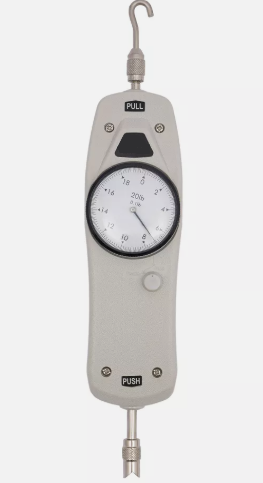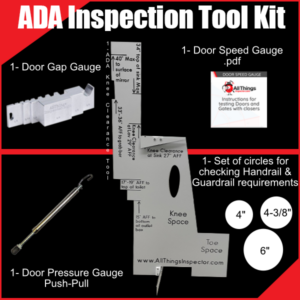
Ensuring compliance with the Americans with Disabilities Act (ADA) is not just a legal obligation for restaurants; it reflects a commitment to inclusivity and accessibility. ADA inspections can highlight critical areas such as parking, entrance visibility, and accessibility of stairs, helping establishments create a welcoming environment for all patrons. From providing suitable employment opportunities to ensuring that every aspect of the dining experience aligns with accessibility requirements, restaurants must prioritize these elements. Accessible restrooms, menus that cater to various needs, and online services that meet digital accessibility standards play a vital role in this initiative. As we navigate these requirements together, let’s uncover practical steps to make your restaurant fully compliant and inviting for everyone. Keep reading to learn how you can implement these essential changes.
In navigating ADA Title III, restaurants must address specific requirements such as ada inspections to ensure accessibility for all customers. This means paying attention to critical areas such as the layout of the dining floor, the usability of the point of sale systems, and the approach to curbs and entrances. I’ve seen firsthand how these elements can significantly impact a customer’s experience, particularly for those who rely on assistive technology like screen readers. Understanding these key areas not only fosters customer satisfaction but also safeguards restaurants from potential legal issues. Compliance with these requirements isn’t just a best practice; it’s an essential part of running a successful business that welcomes everyone.
ADA Title III establishes important guidelines that impact how restaurants operate, particularly concerning accessibility for those with disabilities. Being aware of these regulations can prevent potential complaints or lawsuits that stem from inadequate customer service. I recommend that every restaurant document their compliance efforts to demonstrate their commitment to inclusivity as part of their organizational values.
As I assess the key areas of compliance in my restaurant, I focus on the accessibility of paths from the street to the entrance. Ensuring a smooth transition not only promotes safety for all patrons but also invites a diverse clientele. Additionally, implementing braille signage and offering options for web accessibility on digital platforms can greatly enhance the overall experience for customers with disabilities.
As a restaurant owner, I appreciate that adopting a universal design approach ensures all guests feel welcome, enhancing their dining experience. This commitment not only reflects positively on customer satisfaction but also mitigates the risk of legal issues that can arise from non-compliance, such as potential fees or lawsuits. When I receive questions in the form of an FAQ about accessibility, I make it clear that our restaurant prioritizes inclusivity, fostering an atmosphere where everyone feels valued—regardless of the conditions outside, like snow, or their individual needs.
Ensuring a seamless experience for all guests requires keen attention to parking and entrance compliance. I always emphasize the necessity of having adequate accessible parking spaces near the entrance to my restaurant, as this sets the tone for a positive visit. An accessible route from the parking space to the entrance is crucial, and I make it a priority to evaluate this pathway for any obstacles. Additionally, I keep doorway specifications in mind, ensuring they accommodate wheelchair access while also considering potential challenges like color blindness in our signage and visual cues. My restaurant’s policy revolves around inclusivity, which includes making every aspect accessible while reflecting our brand’s commitment to customer care and comfort.
Having adequate accessible parking spaces is essential to my restaurant’s commitment to ADA compliance. I regularly assess our current parking layout, ensuring it meets construction standards and provides clear signage that directs patrons to these designated spots. To further enhance their experience, I’ve considered integrating a mobile app feature that allows customers to identify available accessible parking spaces, reducing potential frustration and legal risks during their visit.
Creating an accessible route from parking to the entrance is vital for accommodating guests with disabilities. I ensure there are clear markers indicating the designated vehicle spaces, as well as a direct path leading to the entrance that is free from obstacles. Additionally, I’ve made provisions for an elevator inside my restaurant to assist those who may need to navigate between floors, ensuring that everyone can enjoy our cooking without barriers.
Ensuring doorway specifications allow for wheelchair access is a critical part of my restaurant’s accessibility plan. I pay attention to width and height standards to make certain that doors are easily navigable for those using assistive technology, creating a smooth entry point. Incorporating effective web design and language interpretation services on our site also provides essential information about accessibility features, making it clear that we’re committed to being ADA compliant in every aspect of our operation.
Creating an accessible dining area is fundamental to ensuring that all guests feel welcome and comfortable. I focus on adjusting table heights and spacing aisles to facilitate easy navigation for wheelchair users, ensuring they can maneuver freely without obstruction. Additionally, I pay close attention to seating arrangements, as this influences not only comfort but also interaction among guests, including those with visual impairment. Handrails positioned strategically can aid those who need extra support. I also consider telecommunications features that enhance the experience for everyone, reinforcing my commitment to accessibility throughout the dining environment.
In my restaurant, I ensure that table heights accommodate wheelchair users efficiently. By providing ample space in the aisles and maintaining clear pathways, I prevent any potential discrimination and align my practices with the law. My commitment also extends to outdoor dining areas, where I prioritize similar accessibility to guarantee all guests can enjoy their meals comfortably, regardless of their needs. Moreover, I strive to incorporate features like sign language interpretation during events to foster inclusivity for everyone.
In my restaurant, I pay close attention to seating arrangements to ensure all guests can enjoy their meal comfortably. I create ample space between tables, promoting easy navigation throughout the dining area and allowing wheelchair users to access seating without hassle. This consideration is not only a good practice but also helps me steer clear of potential scrutiny from a lawyer regarding compliance with accessibility laws that protect patrons on my property, especially as they navigate from the sidewalk into the dining space.
Restroom accessibility is a cornerstone of my restaurant’s commitment to inclusivity. I’m well aware that accommodating all guests, including those with disabilities, requires thoughtful restroom design and fixtures. Adhering to the Rehabilitation Act of 1973, I ensure that my restrooms provide ample space and usability for wheelchair users while also complying with web content accessibility guidelines related to signage and emergency alarms. Ensuring clear indicators and easy access affects not just legal compliance but also the overall traffic flow in my restaurant, making it a more inviting space for everyone.
In designing restrooms, I prioritize adherence to regulations that ensure accessibility for all guests. I focus on creating adequate space for wheelchair users, ensuring that fixtures are installed with appropriate contrast to enhance visibility. Additionally, I integrate web content features that provide clear instructions and information on accessibility options within our facilities, ensuring that everyone feels welcome and informed.
I prioritize clear and informative signage in my restaurant’s restrooms to ensure everyone can find their way without obstacles. Using a well-designed layout with the help of an illustrator, I create signs that visually depict restroom accessibility features, helping to promote equal opportunity for all guests. Additionally, I make sure that emergency alarms are easily identifiable and accessible, giving everyone peace of mind while visiting our facilities.
In my pursuit of creating an inclusive dining experience, I place a strong emphasis on accessibility features related to menus and service. Offering menus in various accessible formats ensures that all guests can easily read and understand their options, whether that means providing large print, braille, or digital formats compatible with assistive technology. Training my staff is equally important; I make it a priority for them to understand how to assist customers with disabilities effectively. This preparation not only helps them provide exceptional service but also fosters a welcoming environment where every patron feels valued and respected.
In my restaurant, I make it a priority to provide menus in multiple accessible formats to cater to all our guests. I ensure that we offer options such as large print, braille, and digital menus that can be easily accessed through assistive technology. This approach not only improves the dining experience for individuals with disabilities but also reflects our commitment to inclusivity and customer care.
I understand that well-trained staff is essential for providing exceptional service to customers with disabilities. That’s why I conduct regular training sessions to educate my team on recognizing different needs and appropriately assisting guests who may require additional support. By fostering an environment of empathy and awareness, I empower my staff to create a more comfortable and welcoming dining experience for everyone.
Addressing digital accessibility is crucial for creating an inclusive environment that extends beyond the physical space of my restaurant. I recognize that ensuring websites and mobile applications are accessible can greatly enhance the experience for all visitors, especially those with disabilities. This includes implementing features that accommodate various assistive technologies, ensuring that the online ordering and reservation systems are easy to navigate and fully functional for everyone. By prioritizing accessibility in these digital platforms, I aim to foster a seamless connection between customers and my restaurant, making it possible for everyone to engage with our offerings effortlessly.
I prioritize accessibility in my restaurant’s website and mobile app to ensure that all customers can navigate easily regardless of their abilities. I focus on integrating features such as text-to-speech capabilities and alternative text for images, which makes the content more user-friendly for individuals who rely on assistive technologies. By regularly testing these platforms for accessibility, I make certain that everyone can engage with our services effectively.
In my restaurant, I ensure that our online ordering and reservation systems are designed with accessibility in mind. I pay attention to usability for all customers, integrating features that allow screen readers to navigate seamlessly while also providing clear instructions for each step of the ordering process. This thoughtful approach not only accommodates guests with disabilities but also enhances the overall user experience for everyone who visits our digital platforms.
Adhering to an ADA compliance checklist is vital for restaurants aiming to create an inclusive environment for all guests. By focusing on aspects like accessible parking, dining areas, and restrooms, restaurant owners can significantly enhance customer satisfaction while minimizing legal risks. Providing accessible menus and effective training for staff fosters a welcoming atmosphere for patrons with disabilities. Ultimately, prioritizing ADA compliance reflects a commitment to inclusivity, ensuring that every individual feels valued and supported during their dining experience.



Measuring door pressure is acting in compliance with building regulations, like the Americans with Disabilities Act (ADA). It’s an important step in ensuring accessibility, safety

When talking about building safety, the first things that come to mind are fire alarms, emergency exits and security systems. Meanwhile, the one tool that